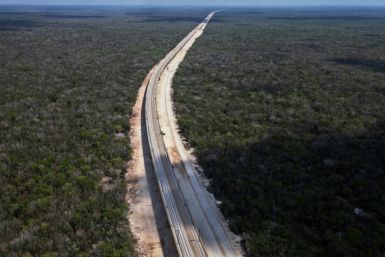Moody’s Downgrades Qantas Credit Rating
Australian flag carrier Qantas was dealt another blow on Tuesday when rating agency Moody's Investors Service downgraded the air carrier's credit rating to Baa3 from Baa2. Moody's explained the cut in long-term senior unsecured rating of Qantas to expectations of ongoing pressure on the company's credit profile.
The pressures come from higher aviation fuel prices, strong competition and a difficult operating environment. Qantas is still locked in arbitration with airline pilots and ground crew at Fair Work Australia. It recently solved the industrial row with aircraft engineers after both parties agreed to a new enterprise deal that guaranteed a 3 per cent pay hike yearly over the next three years which is also a guarantee of no further strikes from aircraft engineers.
Moody's placed Qantas on review with the possibility of a downgrade after the November unilateral grounding by Qantas Chief Executive Alan Joyce of the air carrier's fleet for two days, which disrupted the travel plans of thousands of Qantas passengers.
Despite the credit rating downgrade, Moody's Vice President and Senior Credit Officer Ian Lewis said that Qantas remains one of only few investment-grade-rated airlines in the rating agency's list. Besides Moody's, Standard & Poor's has also listed Qantas as an investment-grade air carrier amid its downgrade of the air carrier's debt rating to negative from stable in November 2011.
"The Baa3 investment-grade rating continues to reflect the company's very sound operating model, particularly its strong domestic franchise, and strong liquidity," Mr Lewis said in a statement.
Qantas stressed that despite the Moody's downgrade, it is still financially strong with a cash balance of over $3 billion. It also doubled its net income to $250 million in the year ended June 30 partly because of higher demand for business travel among mining executives and workers.
The airline said that it has the ability to adjust capital investment as necessary. The company pointed out that financing was in place for its 2011/12 aircraft deliveries and Qantas intends to fund the balance of future capital commitments from operating cashflow, cash reserves and available debt.
However, Qantas admitted that it was also hampered by a significant decline in the global aviation industry in 2011 as escalating jet fuel prices added $450 million to its fuel bill in the first half of the 2011/12 financial year.
Those pressures, besides forced grounding in 2011, caused Qantas competitor, Tiger Airways, to post a December quarter loss of $13.4 million and anticipate a yearly loss to March 31. For the same quarter 12 month ago, the budget air carrier posted $17.3 million profit after tax.
Tiger's loss was partly due to a 26 per cent rise in total expenses for Q4 due mainly to a 34 per cent hike in fuel costs and a considerable increase in staff costs. The air carrier's reduced flying programme for the last quarter caused a 12 per cent drop in passenger numbers and 2.7 per cent decline in seat capacity.
Tiger was grounded by Australia's Civil Aviation Safety Authority over operational safety concerns in mid-2011 but was allowed to resume services in August. It also pulled out from its Adelaide base in 2011.
To recover from its losses, Tiger announced on Tuesday that it has secured government approval for six extra daily flights. Tiger would fly again from Perth and offer new services to Sydney, boosting to 38 from 32 its daily trips.
Besides announcing the six new daily flights, Tiger Airways Chief Executive Andrew David also disclosed that the company would open a second hub by the second half of the calendar year.
"It's recognition of our fundamental improvement since the grounding and another step towards getting all of our 10 aircraft flying on the 60 sectors we previously had," Mr David said in a statement.






